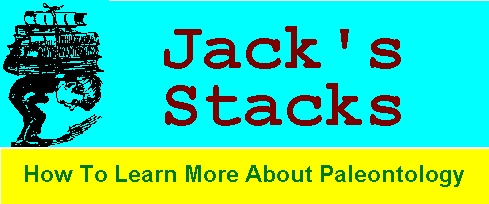
Advanced Trilobites by an Expert

We have another British work to review this month and, Nigel Hughes had nothing to do with it. Well not exactly. I did happen upon his review of this book in Palaios, Vol. 8, No. 4, August, 1993. If I hadn't seen the review, I wouldn't have even known about it. Thanks Nigel!
Fossils Illustrated, Volume 2, Trilobites, by H. B. Whittington, The Boydell Press, 1992, is the work being reviewed. This volume contains 145 pages plus 120 plates. The price is £39.95 for Nigel, $79.00 for the rest of us. I had to special order this one through Books & Company. The publisher's U. S. address is listed as Box 41026, Rochester, NY 14604 if you need it.
A couple of items to note are in order first: This is Volume 2 of a series called Fossils Illustrated as noted above. Volume 1 in the series is Graptolites: writing in the rocks. Information available within the book gives no indication of titles or number of future editions. Both books are available in the U. C. Geology Library.
The author should be familiar to all trilobite fanciers as probably the world's best known trilobite expert (outside of Cincinnati of course). Whittington is also responsible for the recent revival of Burgess Shale studies. Currently, the author is listed as Emeritus Woodwardian Professor of Geology at Cambridge University. He was previously (1949 to 1966) Professor of Geology at Harvard University.
Please don't let the series title make you think of such fluff as most American publications with "Illustrated" in the title. This is a serious work oriented toward professionals and advanced amateurs.
The first 98 pages are divided into seven chapters: General characters, terminology of exoskeleton, zoological names; Limbs; Anatomy and activity; Growth and moulting; Exoskeleton: form and function; Preservation and occurrence; and Distribution in time, evolution, and classification. Following these is a ten page reference section organized by chapter. The arrangement of the plates and the classification of the species figured is next, followed by the explanations of the plates. Lastly are the plates themselves.
I don't know that I could suggest a better arrangement for the book but this format leads to a tremendous amount of page flipping. As indicated, the explanations of plates are in a separate section from the plates themselves; these explanations contain much technical information with keys to reference on the actual plate. The text in the seven chapters ahead of the plates also references specific plates to augment descriptions and explanations. To understand the text descriptions, one needs to continually jump from text to plate to plate explanation.
A total of 14 text figures appear in the first 98 pages. Most of these are line drawings illustrating either specific restorations of trilobites or parts thereof. The text figures are much more handy in their proximity to the descriptions they support.
Trilobites, as mentioned earlier, is slanted to professional and advanced amateur audiences. This becomes immediately apparent with the author's use of technical terms. Unless you are knowledgeable in trilobite anatomical terms, you may find it handy to have an invertebrate paleo text nearby. Without this knowledge or reference text, you may lose some of what the book covers but, for the most part, it is only needed to a minor degree. I found myself in this category, knowing only the most basic of trilobite body part names, but I was able to learn a great deal since Whittington's writing is very readable and understandable.
Oddly enough, only one trilobite from the Cincinnatian is shown in a plate: Ceraurinus icarus; the explanation for this plate does give useful information to differentiate this genus from Ceraurus. The Upper Ordovician Isotelus, Triarthrus, and Cryptolithus which are pictured come from either New York, Pennsylvania, or Virginia. A pictured specimen from the Harvard Museum of Comparative Zoology, Flexicalymene senaria, is attributed to Ohio; my guess is that this is really F. meeki, probably an old specimen which was never updated with one of those pesky scientific name changes. A specimen of Rusophycus pudicum from the Cincinnatian is also illustrated.
The text sections of Trilobites contain quite a bit of information about Cryptolithus, Triarthrus, Isotelus, and the Calymenids. Whittington spends more time with these groups than any other. He also deals with the Ordovician and Silurian groups heavily. This may be because the biggest radiation of trilobites began in the Ordovician. Cincinnati's own Flexicalymene within a Rusophycus is discussed in the chapter covering anatomy and activity.
I have previously reviewed the Levi-Setti book Trilobites which in some ways is similar to Whittington's. If you are a real trilobite fancier or want to be, you'll want both of these books. If, however, you are more interested in a less technical book with pictures of outrageously well preserved and prepared spiny trilobites, you'll want the Levi-Setti book. Whittington's photographs are well done in the traditional methods of paleontology and include SEM pictures and pictures of trilobite parts as well as very nice complete specimens; most of these are museum specimens. Levi-Setti used museum specimens as well but many of the more exotic species were in private collections. From a text standpoint, both books cover the same ground in some areas; Levi-Setti spends a lot of time with the vision system while Whittington covers more detail on anatomy, growth, evolution, and classification. Both are worth your consideration.
I would also encourage you to read Nigel's review of Trilobites in Palaios for an evaluation from the professional's viewpoint.